Triumph 675 Street Triple Top Speed

Share This Page
Triumph 675 Street Triple Top Speed
Source: https://www.675.cc/threads/street-triple-top-speed.6180/

Triumph 675 Street Triple Top Speed
Source: https://www.675.cc/threads/street-triple-top-speed.6180/
VR gaming is an interesting thing, isn't it? The concept hasn't quite blasted off into the success-o-sphere, but it hasn't meekly faded away either. It's a bit of a slow-burner, really, sure to benefit greatly from advancements in technology and reductions in costs of those pricey VR headsets.
If you are a proud owner of an Oculus, PlayStation VR or HTC Vive system, you'll have noticed that the whole VR thing isn't something you can just shoehorn in anywhere. It's got to suit the experience, and the racing genre is perfect for that. After all, when a petrolhead isn't driving, they probably want to be playing a video game that makes them feel like they're driving.
RELATED: 10 Car Video Games Every Gearhead Loves (And 8 That Just Make Us Mad)
Let's hop behind the wheel, buckle up and check out ten of the very best VR racing games on the market.
Project CARS was released for the PC, PS4 and Xbox One in 2015. It supported the PlayStation VR and Oculus Rift, and was updated the following year to be compatible with HTC Vive.
One of the first titles to really get to grips with VR racing really nailed it. Project CARS is renowned for its quality as a sim and its stunning visual effects (the weather in particular). It may have been a newcomer from the lesser-known Slightly Mad Studios, but its success spawned a sequel and a mobile title dubbed Project CARS GO.
Well, it wasn't going to be long before the biggest name in racing reared its head, was it? Gran Turismo, as fans will know, is much more sim than straight-up racer. Mario Kart, it is not.
Racing fans will already be familiar with the quality that is PlayStation's primo racing franchise, but Gran Turismo Sport took all of that to a whole new level when it hit VR. When sampling an early build back in 2017, Eurogamer reported,
"In the car the attention to detail makes it the measure of its PC counterparts. It's the little details that all add up - a neatly modelled set of Puma Furio racing gloves on your driver's hands, for example, lending it that extra touch of authenticity, or just the sheer craftsmanship that's been poured into the tiniest rivet in the cockpit."
What more could a car-lover need to hear?
Here's another racer that wasn't specifically built with VR hardware in mind, but took advantage of the possibilities it offered to build on an already fantastic foundation.
Assetto Corsa was released for the PC in 2014, arriving on current-gen consoles two years later. Its name means 'Race Attitude,' and developers KUNOS Simulazioni aren't kidding with that. The game is characterized by its impressive, realistic physics engine, as well as its generous selection of tracks and cars.
The key to the game's success is the focus on what really matters: the driving experience. That's at the heart of every moment of Assetto Corsa's gameplay, and fans love it for it.
As we're already seeing, the makers of great VR driving games really don't push the boat out when it comes to naming them. iRacing may sound like a bland, simple experience, but don't let the name fool you. This one's right up there with the cream of the crop.
A subscription-based experience previously known as iRacing.com, this is another game that makes sure to put realism front and center at all times. Its track-mapping software makes for an experience so authentic that many real-world racers have been known to use iRacing for track practice!
Next up, we've got a different, more accessible kind of VR experience. A lot of us have been tempted by the whole VR gaming thing, but haven't wanted to lay down the fairly expensive price of entry for a headset. If you're one of those cash-savvy people, how about Need for Speed- No Limits VR?
RELATED: 25 Cars From Need For Speed Underground Modded In Real Life
This entry in the popular franchise is available on the App Store and is designed for DayDream View. It's been highly praised for its presentation and control scheme (the latter of which is a particularly big deal; VR games often struggle to get that right).
VR gaming is something we tend to see as a more recent development, but that's not really the case. I'm not talking about the shonky, migraine-tastic old Virtual Boy, but our next entry, Live for Speed.
This racer has been doing the rounds since 2002. Its virtual reality compatibility, however, took a little while longer to kick in. It was first off the mark to get it, though.
It may not be as visually stunning as other entries on this rundown, and its tracks and vehicles are largely fictional, but this is an impressive offering. Advanced features include an extensive 'walk' mode, which allows the player to take a detailed look at the tracks 'on foot.'
The interesting thing is that a lot of the top VR racing experiences available at the moment weren't built with the functionality in mind. It's true that we've gotten much more familiar with how the technology works, but it's still a little experimental by nature and that's sometimes reflected in its tentative use.
RaceRoom Racing Experience is another title that, like Batman, merely adopted VR. It wasn't born into it or molded by it. Tired movie references aside, though, Vive and Rift support were added to RaceRoom in January 2017, and it went quite well. It nailed a lot of things that many VR experiences get horribly wrong, such as the HUD and juddering performance.
The innovations in the gaming industry often take some time to catch on. It's odd to think that, just a few years ago, touchscreen devices like the Nintendo DS were a bit alien. Now, it's smartphones-amundo around here.
It's been the same story with VR. As with any gaming system, you want to be sure that you're going to get your money's worth, in terms of the games. The key to gaining momentum and long term success? Quality launch titles.
In that sense, the pick of the PlayStation VR crop was probably Driveclub VR, a separate version of PS4-exclusive racer Driveclub created for the hardware. It only offered a limited crop of modes, but was a gorgeous and solid introductory experience to VR.
Another thing to keep in mind with all this is that gimmicks don't really get you anywhere. With new tech like motion controls, touchscreens and such, there tend to be a lot of glorified tech demos (think Wii Sports) flying around. Yes, these sorts of offerings have some wow factor early on, but when you buy into a new system, you want to be there for the long haul. You want to know that the quality games are coming, and coming to stay.
This is where racers that were already great but further-enhanced with VR compatibility come in. DiRT Rally VR is another example of a game that isn't just a throwaway novelty. It's a racer for fans of real racers, a good old fashioned test of your driving skills. A serious sim for sure and a solid challenge to boot.
To finish up, we're going to take a look at the sequel to the successful Project CARS. It's always a difficult task to create a follow-up to a game that was so well-received, but Project CARS 2 seemed to push all the right buttons.
The original was darn solid, but it had its issues too. The goal of the second game, then, was to expand on what Project CARS did right and attempt to address its shortcomings. The result was a great piece of software. I think UploadVR put it best: "Project CARS 2 feels like the Tekken of the racing world — intricate and complicated — whereas Driveclub VR feels more like Mortal Kombat: approachable, but packs plenty of depth when you dig into it."
NEXT: 20 Cars From Video Games Built In Real Life
This Is What Happens When You Put A Maserati Engine In One Of Most Iconic Cars Ever
Like the idea of a DS but wanted a little more prestige under the hood? The SM could be the car for you.
Read Next
About The Author 
Chris Littlechild (2 Articles Published)
More From Chris Littlechild
Source: https://www.hotcars.com/best-vr-racing-video-games/
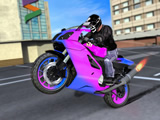
Sports Bike Racing
105 votes
Played 5 784 times
Test your riding skills while having fun with this motorcycle game with great content. Perform ...
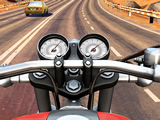
Moto Road Rash 3D
182 votes
Played 17 724 times
Ride at full speed in this motorcycle road game featuring stunning graphics, multiple game modes ...

Moto X3M 5: Pool Party
201 votes
Played 35 228 times
Our crazy stuntman is back for a new thrilling pool party on his bike! Ride at full speed in ...

Traffic Tom
16 votes
Played 1 283 times
Help Tom to become the king of the road riding more and more powerful and faster and faster ...

Neon Rider
276 votes
Played 96 070 times
Cybernetics bike game, strongly reminiscent of the movie Tron, with the original mechanism of ...
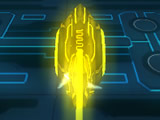
Light Speeder
184 votes
Played 85 365 times
Bike game in a cyber universe like Tron, with grandiose graphics and speed sensation. Enter the ...

Dirt Bike 2
60 votes
Played 64 587 times
Dirt Bike 2 is a free motocross game where you will have to prove your bike skills by crossing ...

Short Ride
427 votes
Played 39 576 times
Did you know that biking could be a very dangerous and even deadly activity? Get on your bike and ...

Moto X3M
341 votes
Played 147 950 times
Put on your helmet and get ready for the most thrilling race of your life! This bike game features ...

Extreme Moto Run
71 votes
Played 41 302 times
Warning for all the speed fanatics and motocross enthusiasts, this game is aptly named and the term ...

Moto X3M 4 Winter
266 votes
Played 113 325 times
After riding the steepest slopes all around the planet on your motorbike, prepare yourself for the ...

Moto X3M 6: Spooky Land
144 votes
Played 33 018 times
On the occasion of Halloween, this great bike game is back in a sixth instalment with even more ...
Source: https://en.gameslol.net/moto-x3m-1085.html
![]()
Joined
·
9 Posts
Discussion Starter · #1 ·
Stator died due to deformed fly wheel. I installed new stator, new fly wheel, set timing with the nihlo piston top height tool to line up stator and flywheel marks. New head orings and torqued properly.
Also repacked the exhaust with FMF 2 stroke packing kit. Then I kicked her, she started second kick and idled about 30 seconds all good, sounded sweet. Then she cut out. And has been impossible to start since, no luck to get her going. She has spark but plug is from last year with low hours, took off carb and cleaned jets and sprayed it out. If I take out plug, it is soaked in fuel. If I take plug out and clean it, and blow out the cylinder with some air to dry it, then replace plug, she will sputter first kick and then nothing and plug is soaked again. Any suggestions to the issue, noting it did run about 30nseconds smoothly??? Is my coolant leaking in at head? Is the plug un need of replacement? Man , I am lost on this one. Thanks , Bill
![]()
Joined
·
2,562 Posts
Suggestions:
- Replace plug with new one. It is not uncommon that a plug will give nice spark while on the outside, but when in cylinder the pressure under compression will stop the spark.
- As motor did run 30 seconds on idle (and just a little throttle I hope??) your setup of stator and timing should be good.
- You might have an issue with the ignition cable/lead and/or the spark plug cap. I have come across a cable/lead that had a small cut in it that got close enough to earth when on the plug in cylinder, but when plug was out and I was checking for spark the cable/lead did not get close to any earth (frame) so would not earth. So I had good spark with plug out lying on cylinder, but no spark while in cylinder.
- I assume that when you kick over the motor with the plug in she feels good and has heaps of compression?
- To check if coolant is getting in to head empty carbi and close fuel tap. Then kick for a short while w/o spark plug. Now put plug back in and get kicking leaving fuel tap closed. If your plug is wet when you take it out check if it is water or fuel. (Taste, smell or try to burn with a lighter)
- Also take off stator cover and have a look incase you forgot to tighten up something properly and that nothing has moved.
If all this checks up OK you might have an issue with the head gasket (the one closest to the piston). It only needs to be a little bit out of place when you tighten up the head and you will loose enough compression for the bike not to want to start. Normally bike starts initially but as the high compression starts beating on that part of the gasket it won't take long before it gets bad enough so it does not do it's job anymore.
Once you checked all this I hope you find the issue. But if not, come back and we dig deeper.
![]()
Joined
·
9 Posts
Discussion Starter · #3 ·
Hey Axem, thanks very much for all the help. We ended up with a new spark plug (a cheap 3 dollar one just for troubleshooting) and it runs A1. I had a $40 Irridium plug that had just a few hours on it, but perhaps the last failing stator killed it with irregular output?
I also took the head off, checked my timing again (was ok) and added a new rubber oring nearest the cylinder (the oring with small outer rings around each bolt). I torqued it a bit more than last time. No more water in exhaust now. We've been out several short rides, running A1, lift up the front tire in 4th for him.
Your suggestions were bang on, and I will remeber for future troubleshooting. I am curious to see how long this 3 dollar plug lasts as well. Best part is getting my 14 yr old computer gaming addicted boy in the garage tearing the motor down to troubleshoot - that's the stuff he will remeber down the road!
Thanks again,
Bill

1.9 MB Views: 136

2.6 MB Views: 123
![]()
Joined
·
3,364 Posts
high priced performance
good to hear bike is sorted. good to hear your boy is involved in the workings of the bike. good on you sir. good for the boy. save your money on exotic spark plugs. unless your motor is tuned like a violin it is not needed. most riders can foul a cheap spark plug as quickly as a precious metal high priced one. kids are notorious for fouling plugs on properly tuned and jetted motors, so no need to risk any dirt bike budget dollars unless they are really needed. your bike will run fine with standard plug and your high priced plug will not add any power or performance worth the expense. save your money and spend it on more fun stuff.....like premix for more dirt bike riding:grin2:
![]()
Joined
·
2,562 Posts
Thanks!
Cool to learn that you solved the issues!! And that boy working on the bike, priceless! Memories for life! With the added bonus of him learning something, that is always handy!
And I fully agree with @augiedoggie re the plugs. The Iridium ones struggle to handle a motor that is a little worn and not finely tuned. We have been racing at a relatively high level in NZ (a few NZ Champs and more local ones) and I have never found any noticeable advantage from a Iridium plug. I am sure they do what we are told. But it has to be for someone who is riding at 100% and wants/needs to find one more %... And how many of them are there at a local MX track??
You might already know this but anyhow:
- The 85cc/105cc (same bike just a bigger bore and piston) needs their big end/conrod replaced at 80 hours use. You can squeeze some more out of them, but the costs to fix a blown one is always more than doing it before it blows...
- Top racers swap pistons at 12 hours. We have managed well by doing a new ring (we run one ring pistons for less drag) at 20 hours and the piston at 40 hours. If you use twin ring pistons you get more than that out of them, probably 30 and 60 hours?
- KTM's 85cc stators tend to die. You can wait until it happens, or get a spare one that you can easily swap at a race day. (If you never use it they sell well once you guys move up to 125cc) We moved to having 2 bikes, that solved any issues with a bike dying at a race meet 3 hours away first thing in the morning...
Apart from that... keep on top of things, if you notice something that is not right (sticking throttle, spongy brake, clutch issues etc.) sort them before they become bigger and more costly! Make the boy wash the bike and teach him how to oil the chain, check/swap gearbox oil (we do gearbox oil at 5 hours of use) wash and oil air filters and replace them safely w/o allowing dirt in to the carby!!
Feel free to come back to tell us how it all goes for you guys!
Source: https://www.ktmforums.com/threads/105sx-will-not-run-wet-plug-with-spark.129532/
A muscle car that other fastbacks could only dream of, the 1966 Charger with this engine was advertised with 425 horsepower on a 10.25:1 compression ratio. "Beauty and the beast" is how Dodge advertised it to the U.S. public, and as opposed to lesser V8 options, the big ol' HEMI was offered with one year or 12,000 miles (19,300 km) of warranty instead of five years or 50,000 miles (80,400 km).
A total of 468 units were specified with the 7.0-liter leviathan, and of that population, 250 were specified with the four-speed manual. Found in a barn in the Appalachian Mountains in 2003, this bright red 1966 Charger is one of those cars, and all of the numbers match according to the selling vendor.
Offered by Gateway Classic Cars of Orlando, the H-Code 426 HEMI is rocking black vinyl for the bucket seats and interior door panels, an AM radio, a spare tire, the original jack, power brakes and steering, as well as Magnum 500 wheels. Kelly Charger radial tires bring the point home, and the Dana 60 rear axle sweetens the deal with a 354 Sure Grip limited-slip differential.
Even though the odometer shows 70,217 miles (113,003 kilometers) at the time of writing, the seller can't confirm if these miles are true. Photos of the underbody and the engine compartment suggest a well-maintained vehicle, and every panel is straight as an arrow. The brightwork and exterior badges are in pretty good shape as well, and the same can be said about the cabin.
On that note, do you think $84,000 is a fair price for such a collectible piece of Mopar history? For reference, the most expensive Dodge Charger on sale today is the 797-horsepower SRT Hellcat Redeye Widebody at $78,595.

Source: https://www.autoevolution.com/news/h-code-1966-dodge-charger-426-hemi-looks-like-a-gentleman-s-muscle-car-153476.html

Destruction AllStars review: Sony's new PS Plus freebie stalls out
"Destruction AllStars features satisfying crashes amid a 50 car pileup of bizarre design choices."
Pros
Cons
Destruction AllStars is a chaotic video game, but probably not in the way Sony intended.
The hyper-stylized vehicular combat game is full of monster-sized cars, loud crashes, and bright colors. It also contains a 50-car pileup of ideas all built to take full advantage of the PlayStation 5's unique features. From haptic feedback to integration with the console's card feature, there's a lot happening under the hood of this month's PS Plus freebie … so much so that the game's developer is already walking some of it back less than a week in.
Destruction AllStars' easy-to-understand arcade gameplay provides some satisfying destruction, but a bevy of bizarre design choices, underdeveloped ideas, and forced PS5 features leave this multiplayer game stuck in park.
The core idea behind Destruction AllStars is simple: It's a multiplayer demolition derby where players ram into other cars to amass points. It takes the smash-em-up gameplay of Burnout, but removes the actual racing component. When it comes to the basics, Destruction AllStars gets a lot right. The familiar driving controls make it easy to pick up and play from the get-go. On top of the standard abilities to accelerate and break, players can perform a ram by either flicking the right control stick up or to the side, making it simple to dole out big hits in a way that feels intuitive.
The cars feel fast and can make sharp turns thanks to a handbrake, which allows for some high-speed fun. Knowing an opponent is on your tail and quickly outmaneuvering them to avoid a collision is a simple pleasure. Likewise, the crashes themselves are just plain joyful. There's a real sense of weight every time two cars collide, with metal flying in every direction and a satisfying crunch to emphasize the slam. In the game's single-player mode, there's even a satisfying slow-motion breakdown to really drive it home.
The problem is that it has trouble finding the right framework for those strengths. The online Mayhem mode does the best job, tossing players together in a free-for-all where whoever destroys the most cars wins. It wears thin, but it best delivers on the game's demolition premise with constant chaos.
The crashes themselves are just plain joyful.
The other multiplayer modes can't quite shift into full gear. Gridfall is the game's elimination mode, where players try to outlast one another in a rapidly shrinking arena. Placing in the top two is as easy as getting out of a car and climbing up to a raised platform while everyone else fights. The game doesn't penalize players for just waiting it out, offering little incentive to do anything until it's down to two players.
There's Carnado, too, which tasks players with grabbing gears and banking them in the center of the arena, similar to Destiny 2's Gambit mode. Stockpile, the game's very confusing spin on a zone control mode, requires getting on foot to collect gears. The objective-based play offers something more to do, but nothing really capitalizes on the chaos as well as Mayhem, making it feel like a one-playlist affair.
The game really gets off track when it adds more to the mix. Like Overwatch, Destruction AllStars features unique characters that each have their own special car and abilities. The roster itself is a wonderful motley crew of eccentric characters that includes everything from a hunky luchador to a cat-obsessed e-girl.

The designs are charming, but the actual character system is lacking. At any point, players can eject from their car and parkour around the map. While on foot, players can try to take over enemy vehicles or pick up crystals to charge a special ability, called a breaker. The problem is that there's never any good reason to be out of a car. There's no real benefit to climbing around, and none of the on-foot abilities feel like they do much of anything. Any time I activated my breaker, it was strictly just to boost my speed so I could get back in a car faster. Imagine if Titanfall gave players the option to hop in and out of their mech at any point. Why would you ever leave?
All of the added layers end up feeling superfluous.
Vehicle hero abilities aren't terribly compelling either. Each car gets a different "super," which includes everything from a stealth cloak to a ramming hull. During my time with the game so far, none of those seem to be huge difference makers in matches. I barely notice when an opponent is using their special ability unless it's something visual like Feugo's flaming car. Most of the time, I forget to activate mine, and it doesn't impact me in any noticeable way.
All of the added layers end up feeling superfluous. Rather than giving the game extra depth, they're a distraction that takes a simple premise and overly complicates it.
The gameplay itself is middling, but Destruction AllStars contains a handful of head-scratching choices that completely stall it out. Some of those are subtle. There's no music during online matches, which makes everything feel bizarrely quiet — how does a game with this much style not boast a killer soundtrack? The onscreen text is also illegible across the board, with no options to increase anything. It's as if the game was developed on an IMAX screen.
The haptics, trigger feedback, and sound effects from the DualSense's speaker are constant and often distracting.
Other decisions are harder to ignore, like the game's overbearing microtransactions. The game features both an in-game currency and a premium one bought with real money. The latter can be used to unlock the game's single-player challenges. It also features a truckload of purchasable cosmetics. Some of them cost in-game coins, but others require real money on top of that. Considering that the game was originally going to be a full retail launch release, it feels like Sony slapped a paywall onto features after the fact to quickly flip the monetization strategy.
The most frustrating part regards features specifically built around the PS5 hardware. If Astro's Playroom showed how much can be done with the unique tech, Destruction AllStars shows how it can be taken too far. The haptics, trigger feedback, and sound effects from the DualSense's speaker are constant and often distracting. Whenever your car is in rough shape, the triggers vibrate with a loud, clicking rattle that's grating.

Developer Lucid Games has already started walking some of the game's worst features back. Originally, voice chat was always on by default, with all audio coming through the DualSense speakers. The controller's built-in microphone was also always on, meaning that players were unexpectedly sharing their audio whenever they played. There was no in-game option to disable any of it initially. Instead, players had to open the PlayStation menu and disable voice chat manually every single round. Just 72 hours later, voice chat has now been disabled entirely.
There's a good chance that Lucid Games will rework the game's most puzzling decisions as its community weighs in. Fortnite wasn't built in a day, after all. The question is just whether or not it can do it fast enough to keep up with a crowded free-to-play market that's an unforgiving demolition derby in its own right.
Destruction AllStars has a sturdy engine, but it's overworked in almost every respect. The needless on-foot component and character abilities clutter an otherwise light but fun pick-up-and-play game with satisfying wrecks. Toss in some overeager DualSense support, and the result is a multiplayer game that's chaotic for all the wrong reasons.
Codemasters' Onrush contains many of the same ideas, such as character abilities, in a much more focused package.
It's a multiplayer game, so that depends on the player, but the shallow gameplay wears thin pretty fast.
No. If you aren't a PS Plus subscriber, there's no real reason to. If you are, there's never any harm in downloading a free game.
Source: https://www.digitaltrends.com/game-reviews/destruction-allstars-ps5-review/
Motor vehicle
| Mercedes-Benz B-Class | |
|---|---|
 | |
| Overview | |
| Manufacturer | DaimlerChrysler (2006–2007) Daimler AG (2007–present) |
| Production | 2005–present |
| Body and chassis | |
| Class | Subcompact executive MPV (M) |
| Body style | 5-door MPV |
The Mercedes-Benz B-Class is a subcompact executive MPV (multi-purpose vehicle) manufactured and marketed by Mercedes-Benz since 2005, and now in its third generation.
Similar to the A-Class, though larger, and with larger engines, the European New Car Assessment Programme (Euro NCAP) still classifies it as a hatchback.[1]
As of December 20, 2013, delivery of B-Class vehicles reached 1 million since its launch in 2005.[2]
Motor vehicle
| First generation (W245) | |
|---|---|
 Before facelift | |
| Overview | |
| Production | 2005–2011 |
| Assembly | Germany: Rastatt |
| Body and chassis | |
| Platform | Mercedes-Benz W245 |
| Related | A-Class (W169) |
| Powertrain | |
| Engine |
|
| Transmission | 5-speed manual 6-speed manual CVT |
| Dimensions | |
| Wheelbase | 2006–08: 2,786 mm (109.7 in) 2009-11: 2,779 mm (109.4 in) |
| Length | 4,270 mm (168.1 in) |
| Width | 1,778 mm (70.0 in) |
| Height | 2006–08: 1,613 mm (63.5 in) 2009–11: 1,603 mm (63.1 in) |
The first generation B-Class was introduced in Europe in spring 2005, and introduced in Canada in autumn 2005. The B-Class uses front-wheel drive with sandwich floor construction, parabolic rear suspension,[3] and a two-box design — one for the drivetrain and another the shared passenger/luggage compartment. The B-Class maximizes its interior volume via its height. Having derived from the smaller A-Class, it retained that car's sandwich floor concept.[4]
All models included passive automobile safety systems including ESP, ABS, traction control, cornering lights, active lighting system, and headlamp assist.[5] In the event of a frontal impact the engine and transmission slide beneath the passenger compartment.
In 2008 it was updated with a start-stop system and a BlueEFFICIENCY option.[6] A new NGT variant was added, which could burn either gasoline or natural gas.[7]
In 2011 Mercedes-Benz did a world tour with three of its Mercedes-Benz F-Cell vehicles, one of which was the B-Class. The hydrogen-powered fuel cell vehicle was driven more than 30,000 kilometres in a circumnavigation of the globe, starting and ending in Stuttgart.[8]

Before facelift

After facelift

After facelift

F-Cell

Interior
The B160 and B180 conform to Euro V emission standards. The rest of the engines conform to Euro IV emission standards. A diesel particulate filter is available as an option for the diesel units (this reduces about 99% of the particle emissions, without the need for additives).
| Model | Type | Power | Torque | Transmission | Top Speed | 0–100 km/h (0–62 mph) | Economy (MPG) [ clarification needed ] | Emissions | Years |
|---|---|---|---|---|---|---|---|---|---|
| Petrol | |||||||||
| B160 | 1.5 L I4 | 95 PS (70 kW; 94 hp) | 140 N⋅m (103 lb⋅ft) | 5-speed Manual | 174 km/h (108 mph) | 13.2 secs | 44.1 mpg | 149 g/km | |
| B170 B180 | 1.7 L I4 | 116 PS (85 kW; 114 hp) | 155 N⋅m (114 lb⋅ft) | 5-speed Manual CVT | 184 km/h (114 mph) | 11.3 secs | 44.8 mpg | 146 g/km | 2005–2009 2009–2011 |
| B200 | 2.0 L I4 | 136 PS (100 kW; 134 hp) | 185 N⋅m (136 lb⋅ft) | 5-Speed Manual | 196 km/h (122 mph) | 10.1 secs | 39.2 mpg | 173 g/km | |
| B200 Turbo | 2.0 L I4 turbo | 193 PS (142 kW; 190 hp) | 280 N⋅m (207 lb⋅ft) | 6-Speed Manual | 225 km/h (139 mph) | 7.6 secs | 35.8 mpg | 190 g/km | |
| Diesel | |||||||||
| B180 CDI | 2.0 L I4 | 109 PS (80 kW; 108 hp) | 250 N⋅m (184 lb⋅ft) | 6-Speed Manual CVT | 183 km/h (114 mph) | 11.3 secs | 54.3 mpg | 136 g/km | |
| B200 CDI | 140 PS (103 kW; 138 hp) | 300 N⋅m (221 lb⋅ft) | 6-Speed Manual CVT | 200 km/h (124 mph) | 9.6 secs | 54.3 mpg | 136 g/km | ||
| Natural Gas | |||||||||
| B170 NGT | 2.0 L I4 | 116 PS (85 kW; 114 hp) | 165 N⋅m (122 lb⋅ft) | 5-Speed Manual | 184 km/h (114 mph) | 12.4 secs | 38.7 mpg | 135 g/km | |
| Specification | B180 CDI | B200 CDI | B150 | B170/B180 | B200 | B200 Turbo | B170 NGT FuelEfficiency |
|---|---|---|---|---|---|---|---|
| length | 4,270 mm (168.1 in) | ||||||
| width | 1,777 mm (70.0 in) | ||||||
| height | 1,603 mm (63.1 in) | ||||||
| wheelbase | 2,778 mm (109.4 in) | ||||||
| Kerb weight | 1,435 kg (3,164 lb) | 1,435 kg (3,164 lb) | 1,300 kg (2,866 lb) | 1,310 kg (2,888 lb) | 1,345 kg (2,965 lb) | 1,370 kg (3,020 lb) | 1,445 kg (3,186 lb) |
| tank capacity | 54 L (14 US gal; 12 imp gal) | ||||||
| tank reserve | 6 L (2 US gal; 1 imp gal) | Unknown | |||||
| Cylinders | inline-four | ||||||
| Output hp/rpm | 109 hp (81 kW; 111 PS) /4200 | 140 hp (104 kW; 142 PS) /4200 | 106 hp (79 kW; 107 PS) /5800 | 116 hp (87 kW; 118 PS) /5500 | 136 hp (101 kW; 138 PS) /5750 | 193 hp (144 kW; 196 PS) /5000 | 116 hp (87 kW; 118 PS) |
| Torque Nm/rpm | 250 N⋅m (184 lb⋅ft) /1600-2600 | 300 N⋅m (221 lb⋅ft) /1600-3000 | 160 N⋅m (118 lb⋅ft) /4000-4500 | 155 N⋅m (114 lb⋅ft) /3500-4000 | 185 N⋅m (136 lb⋅ft) /3500-4000 | 280 N⋅m (207 lb⋅ft) /1800-4850 | 165 N⋅m (122 lb⋅ft) /1800- |
| Top Speed | 183 km/h (114 mph) | 200 km/h (124 mph) | 185 km/h (115 mph) | 183 km/h (114 mph) | 196 km/h (122 mph) | 225 km/h (140 mph) | 184 km/h (114 mph) |
| Tires | 205/55 R 16 | 205/55 R 16 | 195/65 R 15 | 195/65 R 15 | 205/55 R 16 | 215/40 R 18 | 195/65 R 15 |
Motor vehicle
| Second generation (W246) | |
|---|---|
 Pre-facelift | |
| Overview | |
| Production | 2011–2019 |
| Assembly |
|
| Body and chassis | |
| Platform | MFA |
| Related | A-Class (W176) GLA-Class (X156) CLA-Class (C117) |
| Powertrain | |
| Engine | 1.6L I4 2.0L I4 1.5L CDi Diesel I4 1.8L CDi Diesel I4 2.2L CDi Diesel I4 |
| Electric motor | Synchronous Electric Motor[9] |
| Transmission | 6-speed manual 7-speed Dual-clutch single speed fixed ratio |
| Dimensions | |
| Wheelbase | 2,699 mm (106.3 in) |
| Length | 4,359 mm (171.6 in) |
| Width | 1,786 mm (70.3 in) |
| Height | 1,557 mm (61.3 in) |
The second generation B-Class was introduced at the 2011 International Motor Show Germany.[10] European models went on sale in November 2011. Japan models went on sale in April 2012. They are assembled at Rastatt, Germany,[11] and from 2011 at Kecskemét, Hungary.[12] By summer 2013, over 230,000 second generation B-Class cars had been delivered.[13]
It included new gasoline and diesel engines, mated to either a six-speed manual or seven-speed dual-clutch transmission.[14] Drag coefficient was lowered, despite growing in overall dimensions to the benefit of interior space. A new four-cylinder engine was introduced with the model, the M270.[15]
Safety systems included adaptive cruise control, blind spot assist and, a collision prevention adaptive brake system.[16]
The vehicle received a facelift in 2015.[17]
The last part of the model name indicates how the vehicle is powered:[18]
BlueEFFICIENCY is a term used by Mercedes-Benz for a series of measures which reduce fuel consumption and CO2 emissions. These include:[19]
The B 180 CDI BlueEFFICIENCY Edition was available from September 2011.[20]
Production version includes a choice of manual and 7G-DCT dual clutch transmission, and was available from early 2013.[21] European model was set to go on sale in February 2014.[2]


Production Mercedes-Benz B-Class Electric Drive
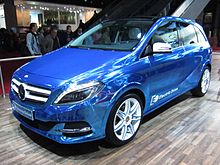
The Mercedes-Benz Concept B-Class Electric Drive was unveiled at the 2012 Paris Motor Show

Production Mercedes-Benz B-Class Electric Drive charging
Initial concept versions of the B-Class Electric Drive were developed under the Mercedes-Benz BlueZERO project using batteries from Li-tec and a drivetrain from Tesla, but Mercedes switched to using a drivetrain developed by Mercedes itself soon after.[22] [23] The Electric Drive was previewed at the 2012 Paris Motor Show,[24] the 2013 New York International Auto Show,[25] and the 2013 IAA International Motor Show 2013.[13] Production for retail customers began in April 2014 at Mercedes-Benz Rastatt factory.[26] In May 2014, Mercedes announced the B-Class Electric Drive will be available in Germany and the UK in the first quarter of 2015.[27] In November, Mercedes-Benz announced pricing for Germany and started accepting orders.
The concept has an electric motor rated 136 PS (100 kW; 134 hp) and 310 N⋅m (229 lb⋅ft), 36 kWh lithium-ion battery from Tesla Motors. The vehicle has a driving range of 200 km (124 mi) with a top speed of 150 km/h (93 mph).[24] The battery can be charged at any standard domestic 230 V power outlet or 400 V rapid charging terminal.
Pricing in the U.S. starts at US$41,450 before any applicable tax credits and other government incentives.[28] In 2015, over 1900 electric B-class were sold in the US. The United States Environmental Protection Agency (EPA), under its five-cycle testing, rated the 2014 B-Class Electric Drive with an all-electric range of 87 mi (140 km). The energy consumption was rated at 40 kWh/100 miles for combined city/highway driving, corresponding to a fuel economy of 84 miles per gallon gasoline equivalent - MPGe - (2.8 L/100 km; 101 mpgimp). The rating for city driving is 85 mpg-e (2.8 L/100 km; 102 mpgimp), and 83 mpg-e (2.8 L/100 km; 100 mpgimp) for highway.[29]
| Model | Years | Type | Power, torque at rpm |
|---|---|---|---|
| B 180 BlueEFFICIENCY | 2011- | 1,595 cc (97 cu in) 16V I4 turbo (M 270 DE 16 AL red.) | 122 PS (90 kW; 120 hp) at 5,000, 200 N⋅m (148 lb⋅ft) at 1,250–4,000 |
| B 200 BlueEFFICIENCY | 2011- | 1,595 cc (97 cu in) 16V I4 turbo (M 270 DE 16 AL) | 156 PS (115 kW; 154 hp) at 5,300, 250 N⋅m (184 lb⋅ft) at 1,250–4,000 |
| B 200 Natural Gas Drive | 2013- | 1,991 cc (121 cu in) 16V I4 turbo (M 270 DE 20 AL) | 156 PS (115 kW; 154 hp) at 5,000, 270 N⋅m (199 lb⋅ft) at 1,250–4,000 |
| B 220 4MATIC | 2013- | 1,991 cc (121 cu in) 16V I4 turbo (M 270 DE 20 AL) | 184 PS (135 kW; 181 hp) at 5,500, 300 N⋅m (221 lb⋅ft) at 1,200–4,000 |
| B 220 4MATIC BlueEFFICIENCY | 2013- | 1,991 cc (121 cu in) 16V I4 turbo (M 270 DE 20 AL) | 184 PS (135 kW; 181 hp) at 5,000, 300 N⋅m (221 lb⋅ft) at 1,250–4,000 |
| B 250 BlueEFFICIENCY | 2012- | 1,991 cc (121 cu in) 16V I4 turbo (M 270 DE 20 AL) | 211 PS (155 kW; 208 hp) at 5,500, 350 N⋅m (258 lb⋅ft) at 1,250–4,000 |
| Model | Years | Type | Power, torque at rpm |
|---|---|---|---|
| B 160 CDI | 2013- | 1,461 cc (89 cu in) I4 turbo (OM 607 DE 15 LA) | 90 PS (66 kW; 89 hp) at 4,000, 220 N⋅m (162 lb⋅ft) at 1,750-2,750 |
| B 180 CDI (OM 607) | 2013- | 1,461 cc (89 cu in) I4 turbo (OM 607 DE 15 LA) | 109 PS (80 kW; 108 hp) at 4,000, 260 N⋅m (192 lb⋅ft) at 1,750-2,500 |
| B 180 CDI (OM 651) | 2013- | 1,796 cc (110 cu in) I4 turbo (OM 651 DE 18 LA red.) | 109 PS (80 kW; 108 hp) at 3,200-4,600, 250 N⋅m (184 lb⋅ft) at 1,400-2,800 |
| B 180 CDI BlueEFFICIENCY | 2011- | 1,796 cc (110 cu in) I4 turbo (OM 651 DE 18 LA red.) | 109 PS (80 kW; 108 hp) at 3,200-4,600, 250 N⋅m (184 lb⋅ft) at 1,400-2,800 |
| B 180 CDI BlueEFFICIENCY Edition | 2013- | 1,461 cc (89 cu in) I4 turbo (OM 607 DE 15 LA) | 109 PS (80 kW; 108 hp) at 4,000, 260 N⋅m (192 lb⋅ft) at 1,750-2,500 |
| B 200 CDI BlueEFFICIENCY | 2011- | 1,796 cc (110 cu in) I4 turbo (OM 651 DE 18 LA) | 136 PS (100 kW; 134 hp) at 3,600-4,400, 300 N⋅m (221 lb⋅ft) at 1,600-3,000 |
| B 220 CDI | 2014- | 2,143 cc (131 cu in) I4 turbo (OM 651 DE 22 LA) | 170 PS (125 kW; 168 hp) at 3,400-4,000, 350 N⋅m (258 lb⋅ft) at 1,400-3,400 |
| B 220 CDI BlueEFFICIENCY | 2012- | 2,143 cc (131 cu in) I4 turbo (OM 651 DE 22 LA) | 170 PS (125 kW; 168 hp) at 3,400-4,400, 350 N⋅m (258 lb⋅ft) at 1,400-3,400 |
| Model | Years | Type | Power, torque at rpm |
|---|---|---|---|
| B-Class Electric Drive | 2014 | AC induction motor | 179 PS (132 kW; 177 hp) at ?, 340 N⋅m (251 lb⋅ft) at 0 |

Before facelift

After facelift

After facelift

Interior
Motor vehicle
| Third generation (W247) | |
|---|---|
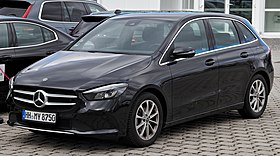 | |
| Overview | |
| Production | 2019–present |
| Assembly |
|
| Body and chassis | |
| Platform | MFA2 |
| Related | A-Class (W177) GLA-Class (H247) CLA-Class (C118) GLB-Class (X247) |
| Powertrain | |
| Engine |
|
| Transmission |
|
| Dimensions | |
| Wheelbase | 2,729 mm (107.4 in) |
| Length | 4,419 mm (174.0 in) |
| Width | 1,796 mm (70.7 in) |
| Height | 1,562 mm (61.5 in) |
The third generation B-Class was launched at the Paris Motor Show on 2 October 2018. At launch, the vehicle was claimed to feature the Intelligent Drive semi-automated driving system borrowed from the S-Class.[32]
The design was improved with a much shorter front overhang. The controversial sculpting on the side part of the vehicle was not carried over to the W247 B-Class. Three infotainment system options is available, with entry-level models getting dual seven-inch displays. A seven-inch display with the larger 10.25-inch display is available, with top-tier models getting a pair of the large displays. It is powered by a full MBUX infotainment system, giving B-Class buyers access to its functions through a standard touchscreen. Features such as intelligent voice control, augmented reality, and a head-up display are optional.[32]


Press kit:
Source: https://en.wikipedia.org/wiki/Mercedes-Benz_B-Class